Input interpretation

aniline
Chemical names and formulas
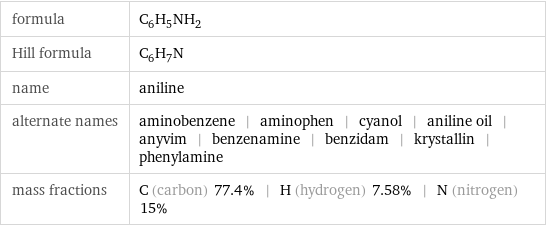
formula | C_6H_5NH_2 Hill formula | C_6H_7N name | aniline alternate names | aminobenzene | aminophen | cyanol | aniline oil | anyvim | benzenamine | benzidam | krystallin | phenylamine mass fractions | C (carbon) 77.4% | H (hydrogen) 7.58% | N (nitrogen) 15%
Lewis structure
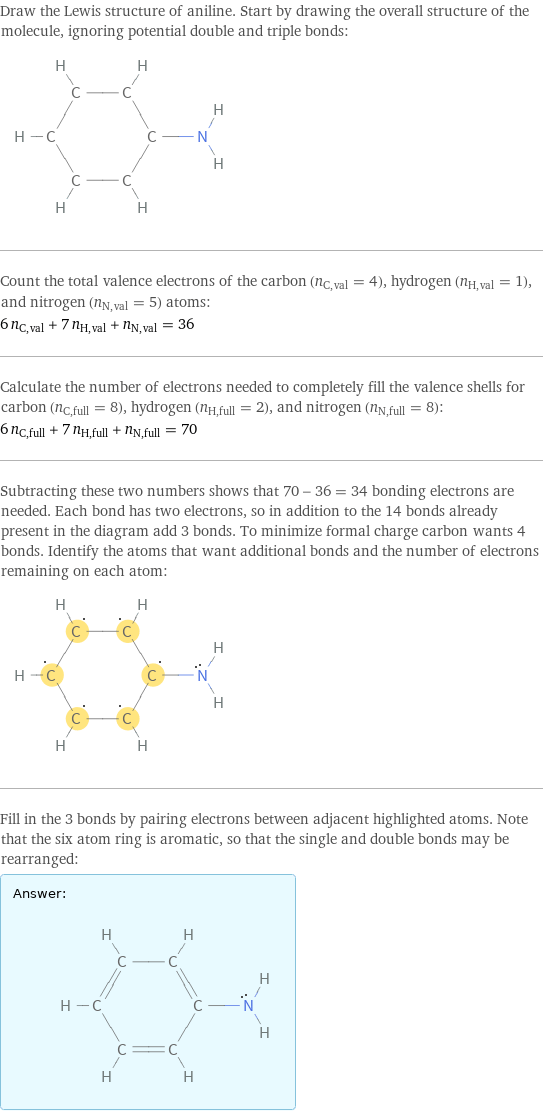
Draw the Lewis structure of aniline. Start by drawing the overall structure of the molecule, ignoring potential double and triple bonds: Count the total valence electrons of the carbon (n_C, val = 4), hydrogen (n_H, val = 1), and nitrogen (n_N, val = 5) atoms: 6 n_C, val + 7 n_H, val + n_N, val = 36 Calculate the number of electrons needed to completely fill the valence shells for carbon (n_C, full = 8), hydrogen (n_H, full = 2), and nitrogen (n_N, full = 8): 6 n_C, full + 7 n_H, full + n_N, full = 70 Subtracting these two numbers shows that 70 - 36 = 34 bonding electrons are needed. Each bond has two electrons, so in addition to the 14 bonds already present in the diagram add 3 bonds. To minimize formal charge carbon wants 4 bonds. Identify the atoms that want additional bonds and the number of electrons remaining on each atom: Fill in the 3 bonds by pairing electrons between adjacent highlighted atoms. Note that the six atom ring is aromatic, so that the single and double bonds may be rearranged: Answer: | |
3D structure
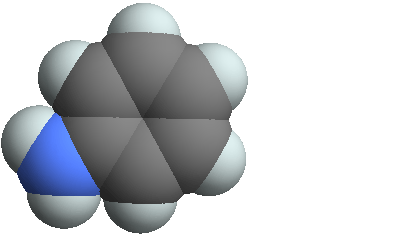
3D structure
Basic properties
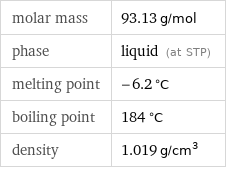
molar mass | 93.13 g/mol phase | liquid (at STP) melting point | -6.2 °C boiling point | 184 °C density | 1.019 g/cm^3
Units

Liquid properties (at STP)
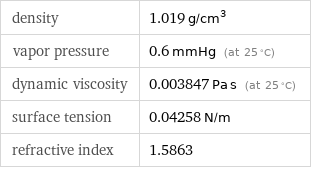
density | 1.019 g/cm^3 vapor pressure | 0.6 mmHg (at 25 °C) dynamic viscosity | 0.003847 Pa s (at 25 °C) surface tension | 0.04258 N/m refractive index | 1.5863
Units

Thermodynamic properties
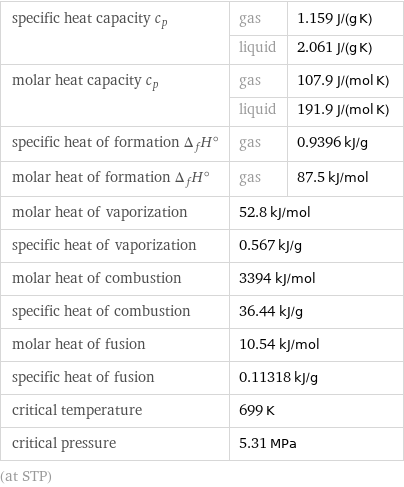
specific heat capacity c_p | gas | 1.159 J/(g K) | liquid | 2.061 J/(g K) molar heat capacity c_p | gas | 107.9 J/(mol K) | liquid | 191.9 J/(mol K) specific heat of formation Δ_fH° | gas | 0.9396 kJ/g molar heat of formation Δ_fH° | gas | 87.5 kJ/mol molar heat of vaporization | 52.8 kJ/mol | specific heat of vaporization | 0.567 kJ/g | molar heat of combustion | 3394 kJ/mol | specific heat of combustion | 36.44 kJ/g | molar heat of fusion | 10.54 kJ/mol | specific heat of fusion | 0.11318 kJ/g | critical temperature | 699 K | critical pressure | 5.31 MPa | (at STP)
Chemical identifiers
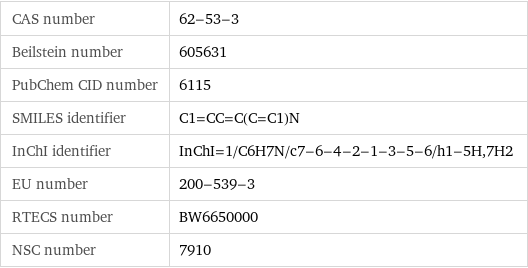
CAS number | 62-53-3 Beilstein number | 605631 PubChem CID number | 6115 SMILES identifier | C1=CC=C(C=C1)N InChI identifier | InChI=1/C6H7N/c7-6-4-2-1-3-5-6/h1-5H, 7H2 EU number | 200-539-3 RTECS number | BW6650000 NSC number | 7910
NFPA label

NFPA label
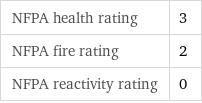
NFPA health rating | 3 NFPA fire rating | 2 NFPA reactivity rating | 0
Safety properties
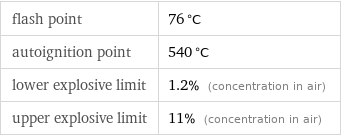
flash point | 76 °C autoignition point | 540 °C lower explosive limit | 1.2% (concentration in air) upper explosive limit | 11% (concentration in air)

DOT hazard class | 6.1 DOT numbers | 1547
Toxicity properties

threshold limit value | 2 ppmv

RTECS classes | tumorigen | mutagen | reproductive effector | human data | primary irritant